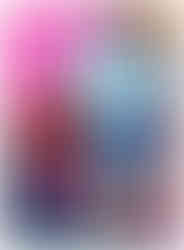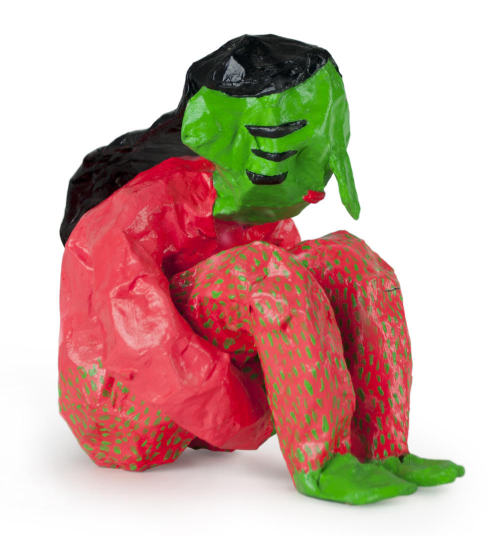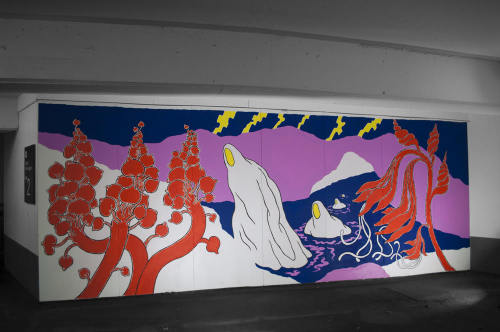- floontz

- Feb 9, 2021
- 3 min read
Updated: Dec 29, 2022
Ulrika Netzler's creatures plot the artistic struggle of restlessness, pitfalls and self-doubt while striking balance with beauty and truth. They appear to her moments before she falls sleep or while knee deep in nature. She senses the supernatural in certain environments, (like the wind caves of the Aokigahara forest at the foot of Mt. Fuji), and bases her designs upon these experiences.

How would you describe the art you make?
Mystery, darkness with a guiding light, soul-searching and self doubt. A sense of being accepted and carried by nature and half frightening, half beautiful creatures. And in the more abstract works I would say it is the intuitive choreography of the hand.
Where did you grow up? Would you say your upbringing has had any impact on your art?
I grew up in different northern suburbs to Stockholm, mostly Täby and Vallentuna. My grandfather ran an advertising agency together with a friend and took up painting full time after he retired. He was the most playful person and really encouraged me to go at everything with a sense of wondrous discovery. He used to make up bedtime stories for me and my sisters about this troll-character who came out from its’ cave and went out into the forest to meet fantastical creatures. That might be one of the reasons as to why it’s become important to me to create fantastical worlds of my own. Without him I probably wouldn’t have thought that working artistically was even an option for me. I owe a lot to him.
What has been most influential in your development?
Firstly I would have to say animated movies by Disney, Don Bluth and Hayao Miyazake. As a kid I spent a lot of time watching animated films, and around the age of six I started to understand that all adults have to work for some reason. So on some of the Disney VHSes they showed these clips from the process of animating Snow White and I was thrilled when I understood that you could actually draw these movies for a living. I started trying to copy the covers of the movies but got very frustrated when they weren’t good enough. I also had a period once the internet had become a thing when I would hang out on elfwood.com, which was a site for fantasy and sci-fi art and fiction started by a swede, and I’d post and browse drawings on there.

And finally I would say two trips to Japan, one to Tokyo and one to Kōfu.
During my Tokyo trip I went to see an exhibition in the Edo Tokyo Museum showing Yōkai depictions from the 16-1800s. Yōkai are supernatural demons, monsters and spirits in japanese folklore and the work shown in this exhibition just blew my mind. It was filled with the most beautiful woodblocks and painted silk, some of which I had seen in offset print before, but the level of craftsmanship really was incredible when viewed up close. I have a background in dance and there is something about the rhythm and movement of the linework in many of these woodblocks that really resonate with me on a deep level. On my trip to Kōfu that I mentioned earlier, I started to realize natures importance for my wellbeing, and that it needs to be part of my work in a bigger symbolical way.
How do your ideas come to you?
Mostly right before I fall asleep or on long walks. Those are the times when I am most open to impression and association. Whether I’m doing work for a client or working independently, I would say that my instinct is always to turn a feeling or situation into a visual metaphor and that openness to experience is crucial for me to be able to do that. Because I’ve learned this about my process I try to make as much time as I can for nature walks and not dismiss it as leisure time, but consider it actual artistic research.
What is the most rewarding part of your work?
Being immersed and absorbed. The luxury of disappearing in the making, into a universe with no boundaries. Constantly learning new things and seeing others feelings reflected by the work.









Comments